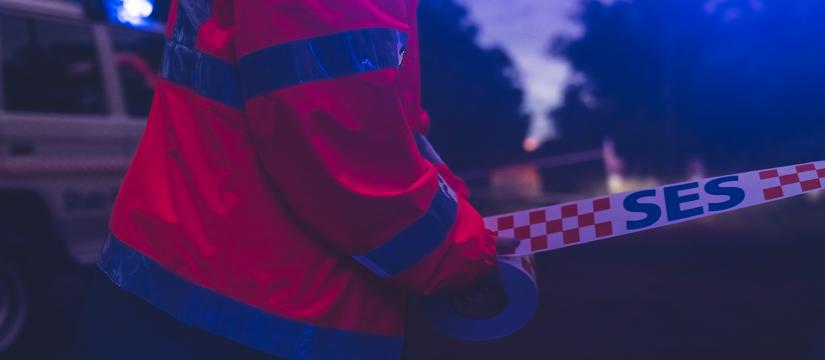
Storm season is coming. Are you prepared?
Australia’s extreme weather makes news around the world, but it’s more than just a headline for those of us who live it. Planning and being prepared now can make all the difference to how well your home weathers a storm.
Make your home storm safe
Storms can develop with little warning, but their intensity can leave a trail of destruction. That’s just one of the reasons why preparing your home now, by doing some simple maintenance, can reduce the risk of damage to your home when a storm sweeps through – and help reduce the cost of the clean-up afterwards, too.
Here are a few simple things you can do now to prepare for storms
- Clear out gutters and downpipes to allow for effective rain runoff
- Check your roof for any damaged tiles or obvious leaks and keep it in good condition
- Sweep debris away from drains and clear any blockages
- Trim close or overhanging tree branches near the house (after checking with your local council)
- Check your insurance policy is up-to-date and ensure you’re adequately covered for storms
- Make a Home Emergency Plan for your household that outlines what you would do in an emergency and practice it
- Prepare an emergency kit and include essential items you would need in case you lose power or need to leave your home in an emergency. If you’re not too sure what to pack, follow this helpful SES Emergency Kit guide.
- Stay tuned to news and weather alerts and listen to your local radio station to stay informed during severe weather
For more helpful tips on preparing your home for a storm, visit the State Emergency Services (SES).
When a storm is coming
When a Severe Weather or Severe Thunderstorm Warning has been issued, secure any loose objects, and ensure your family and pets are safe and secure. Keep an eye on the Bureau of Meteorology (BOM) website or app for regular updates on how close the storm is to you or watch the storm’s direction and movement on the BOM’s radar so you have enough time to get inside safely.
- Listen to your local ABC radio station for updates.
- Put away any loose objects that might get broken or cause damage if blown around.
- Tie down, take inside, or fill with water, large, relatively light things like garbage bins, trampolines, and boats.
- Shelter and secure your pets.
- Shelter vehicles or cover them with a tarpaulin or blankets in case of hail - make sure you have a full tank of fuel in case you need (and are able) to evacuate
- If floods are likely, move outdoor equipment, cardboard boxes, garbage, chemicals, and poisons to a higher place.
- Fill your sinks and bath with fresh water in case you need it later for drinking or bathing.
- Check your emergency kit (see the SES kit list)
- If flooding is looking likely, put furniture, TV, rugs, books, and art as high as you can.
During a storm
When a Severe Weather Warning has been issued by the Bureau of Meteorology, it is important to follow your home emergency plan. Staying safe is the most important thing, so avoid going out in a storm, especially if there’s strong wind and lighting. Keep your family and pets safe and secure indoors and keep away from windows until the storm passes.
After a storm
Here are a few simple things you can do after a storm:
- Make sure the storm has completely passed before you go outside.
- If you are returning home, get permission from emergency services before you go back inside your property
- Keep all power and electrical appliances off until they have been checked and approved for use and the house is cleaned up
- Don’t eat food that has been in floodwater
- Boil tap water until supplies are declared safe
- Take photographs and keep a record of all the damage as it may be needed for insurance claims
- Clean everything that was affected by the flood – it may be contaminated
- Wear gloves and mask during the clean up
When severe weather strikes, damage to your property may happen regardless of how well you have prepared – so make sure you are fully insured. NRMA Insurance offers many types of emergency support, so call us anytime on 131 123 to make a claim or to discuss the help you need. We’re available 24 hours a day, seven days a week.
Want to lend a helping hand?
NSW SES are the lead agency for helping wider communities during NSW disasters, such as floods, storms, and tsunamis. These selfless volunteers come from all walks of life and are equipped with an array of different skills, united by helping their communities in times of need.
Depending on what you like and what you want to learn, there are lots of roles that you can do. Whether providing on-the-ground support excites you or raising community awareness through education programs is more your vibe, there are many ways to be part of NSW SES.
If you’d like to join the cause and volunteer for NSW SES, here are some ways you can get involved:
Unit Volunteer: Volunteer as a helper in orange with one of 260 NSW SES Units.
Community Action Team Volunteer: Take action to help prepare your community for floods and storms.
Corporate Volunteer: Get your workplace or organisation involved as a volunteering partner with the NSW SES.
Spontaneous Volunteers: Support your community during times of need.
If you’d like to become a volunteer with NSW SES, learn more about Unit Volunteer roles here.


